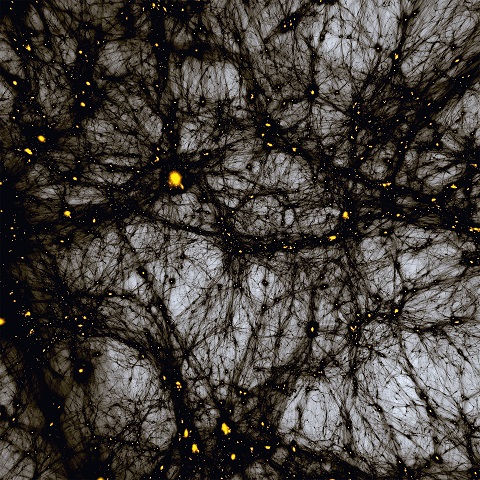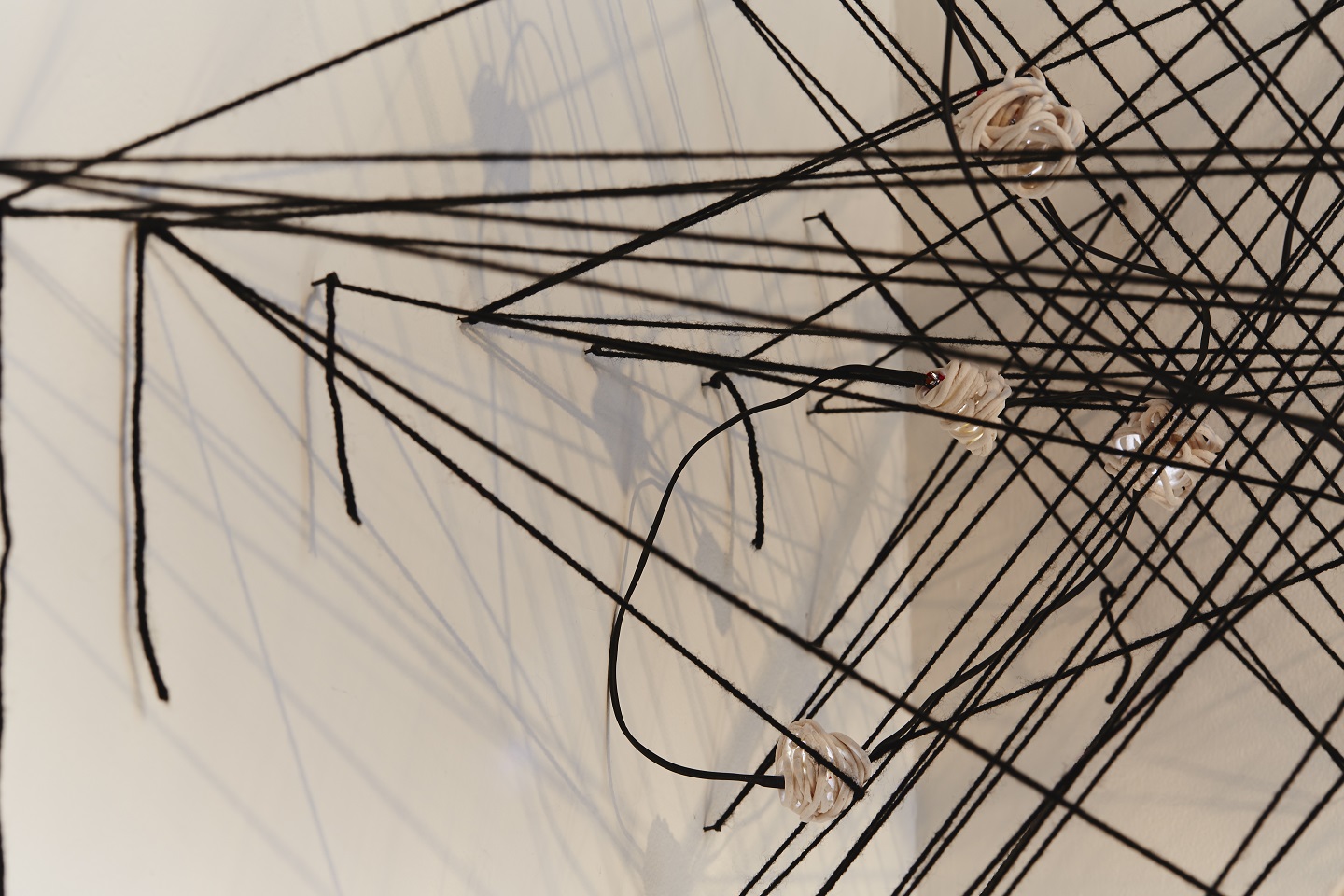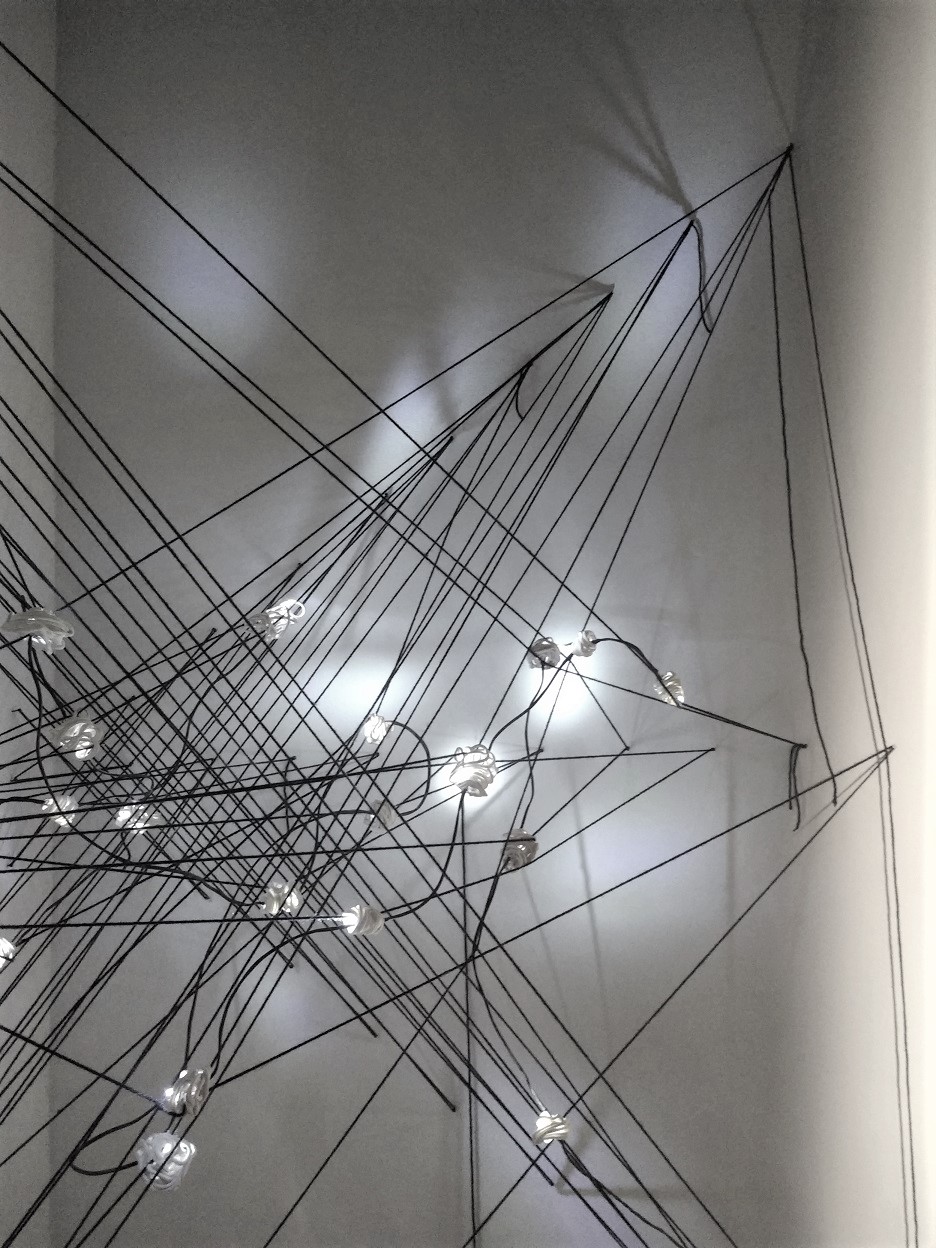
Credit below


Dark matters
Left image courtesy of Ralf Kaelher and Tom Abel from the Kavli Institute for Particle Astrophysics and Cosmology (KIPAC) Stanford University
I was fortunate enough to take part in the Laboratories of Dark Matters project led by artist Susan Eyre in 2017. We had a residency at Guests Projects, Hackney (made possibly by the generosity of artist Yinka Shonibare). Dark matter is a fascinating concept and we were lucky enough both to visit Boulby Mine were researchers are hunting for it, and work with a great scientists from UCL – Chamkaur Ghag.
Here is a little about how I explored the concept
Some describe dark matter as a web which invisibly forms and shapes the galaxies in our universe. We can’t see it, as it hardly interacts with anything; not even light. But we can see the luminous matter all around us. Connective tissue is the matter surgeons cut through to get to organs, the stuff which is often ignored, unconsidered– but plays a vital role in connecting, supporting, shaping areas of the body. What if dark matter is the connective tissue of the universe?
I used objects made by spinning porcelain clay – like the action which forms planets, stars, galaxies. These were part of a network of yarn supports and connects these luminous objects. The number 9 is used to help structure and organise threads and objects; it features in Norse mythology where the universe is divided into 9 worlds and in Greek mythology it takes 9 days to fall from heaven to earth.



